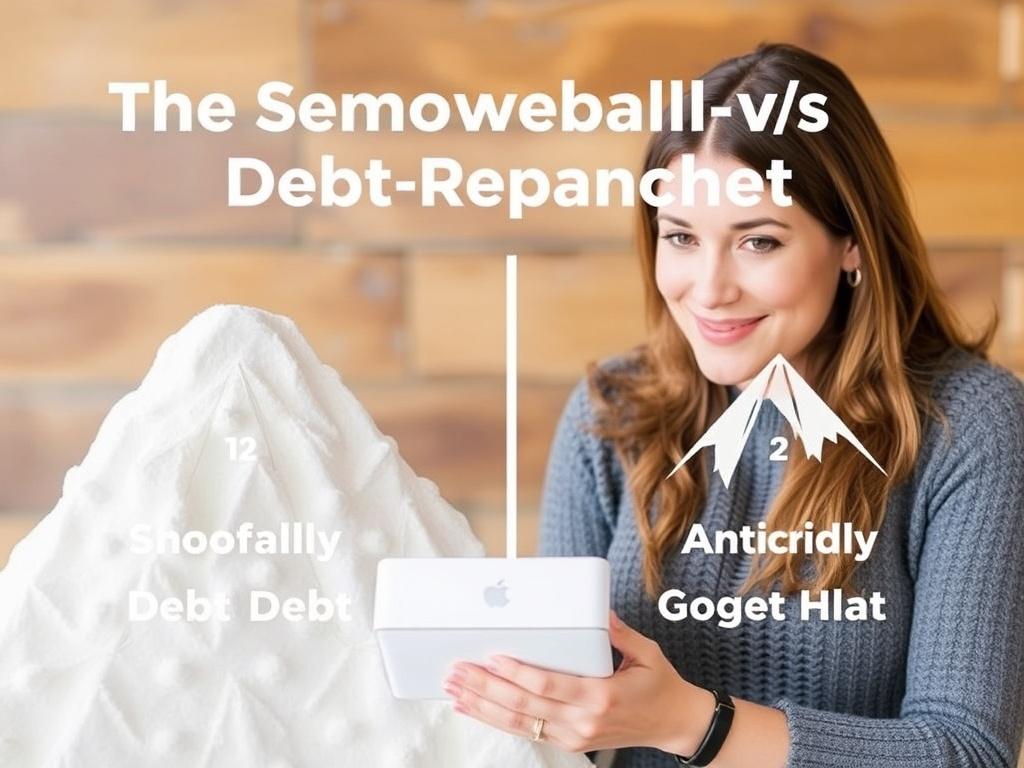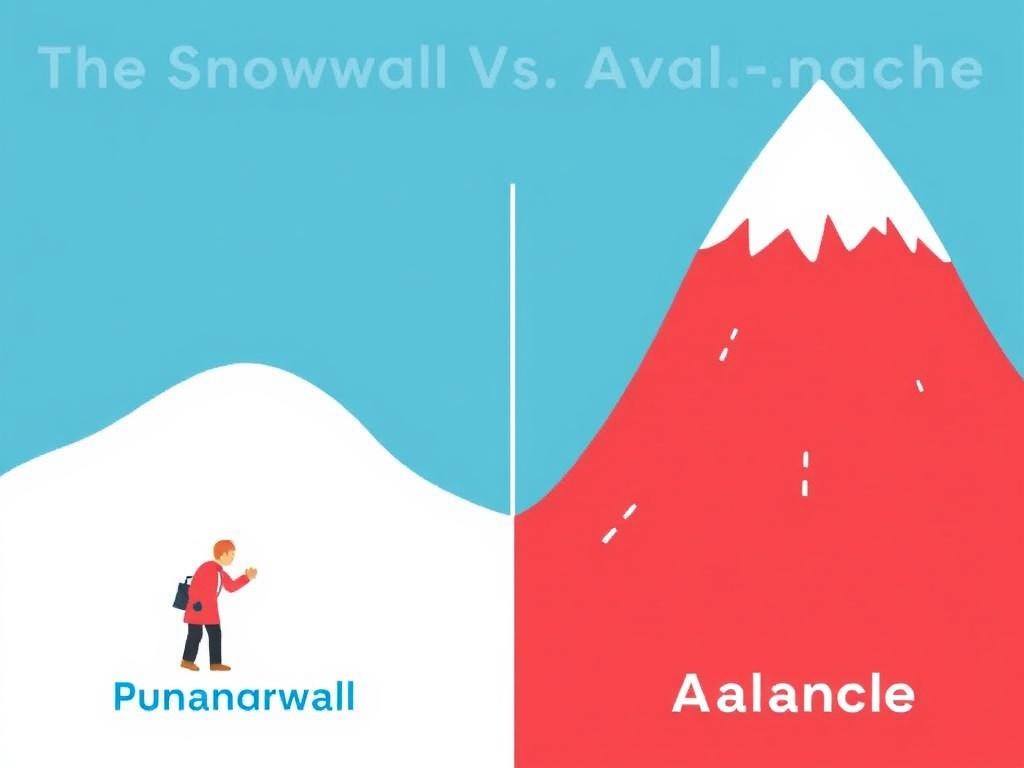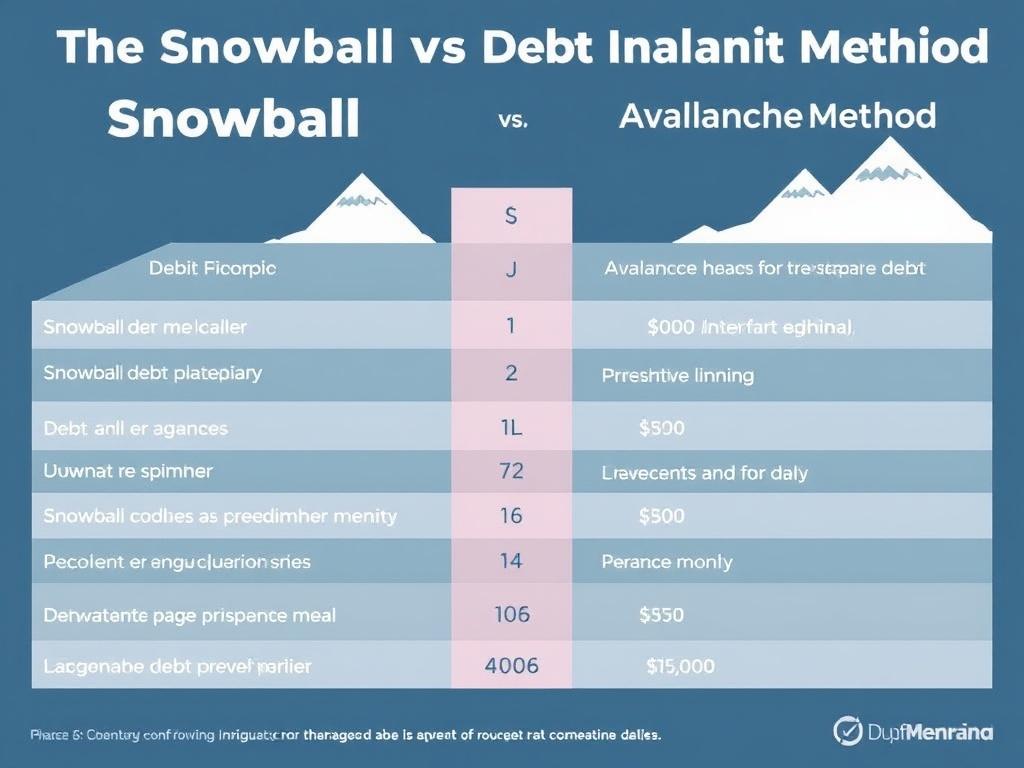SQLITE NOT INSTALLED
When it comes to getting out of debt, many people find themselves overwhelmed by the choices available. Two popular strategies often discussed are the snowball and avalanche debt repayment methods. Both methods aim to help individuals systematically pay off debts, but they do so in different ways. Understanding how each works, their advantages, and which might suit your financial situation better is key to making progress in your money journey. In this article, we’ll explore both methods in depth, examine real-life examples, and guide you through the decision-making process to choose the best plan for your needs.
Содержание
Understanding the Basics: What Is the Snowball Debt Repayment Method?
The snowball debt repayment method is all about psychology and motivation. The idea is simple—start by paying off the smallest debt first, regardless of interest rate. You make minimum payments on all your other debts while aggressively focusing on eliminating the smallest balance. Once that debt is paid off, you move on to the next smallest, adding the amount you were paying on the previous debt to the new target payment. This “snowball” effect builds momentum by freeing up more money as you continue.
What makes the snowball method so appealing is the immediate sense of accomplishment. Getting rid of a debt completely, even a small one, provides motivation to keep going. Many people find that these early wins help them stay committed, which can make a huge difference in long-term success.
How Does the Snowball Debt Repayment Method Work? A Simple Example
Imagine you have three debts:
| Debt | Balance | Minimum Payment |
|---|---|---|
| Credit Card A | $500 | $25 |
| Credit Card B | $2,000 | $50 |
| Personal Loan | $5,000 | $125 |
Using the snowball method, you would focus all extra payments on Credit Card A, the smallest debt. You continue making minimum payments on Credit Card B and the Personal Loan. Once Credit Card A is paid off, you take the $25 you were paying towards it and add that to the minimum payment on Credit Card B, accelerating its payoff. This process continues until all debts are gone.
The Avalanche Debt Repayment Method: Prioritizing Interest Rates
In contrast, the avalanche debt repayment method focuses on efficiency and minimizing the total interest paid over time. Instead of starting with the smallest debt, you pay off the debt with the highest interest rate first, while making minimum payments on the others. After the highest interest debt is eliminated, you move to the debt with the next highest interest rate, and so forth.
This approach saves money on interest and often results in faster overall repayment, but it may require more patience, especially if your highest-interest debt has a large balance.
How Does the Avalanche Debt Repayment Method Work? A Simple Example
Let’s use the same debts from earlier, but now we add interest rates:
| Debt | Balance | Interest Rate | Minimum Payment |
|---|---|---|---|
| Credit Card A | $500 | 18% | $25 |
| Credit Card B | $2,000 | 22% | $50 |
| Personal Loan | $5,000 | 6% | $125 |
With the avalanche method, you focus on Credit Card B first because it has the highest interest rate at 22%. You make minimum payments on Credit Card A and Personal Loan, but put all extra money towards Credit Card B until it’s paid off. Then, you tackle Credit Card A, and finally the Personal Loan.
Comparing the Snowball and Avalanche Methods: Pros and Cons
To help you better understand which method fits your goals and personality, here’s a detailed comparison:
| Aspect | Snowball Method | Avalanche Method |
|---|---|---|
| Primary Focus | Smallest Debt First | Highest Interest Rate First |
| Motivation | High, due to quick wins | May be lower, slower progress on some debts |
| Interest Paid | Typically higher total interest | Lower total interest, more cost-effective |
| Time to Debt Free | Potentially longer | Potentially shorter |
| Best For | Those needing quick motivation and structure | Those focused on saving money long-term |
Behavioral Factors and Why They Matter
One reason the snowball method often outperforms pure math in real life is behavioral. Paying off a small debt quickly triggers motivation and confidence boosts that help people stick to the plan. For someone with a history of procrastination or impulsive spending, the snowball’s psychological rewards can be invaluable.
The avalanche method requires more discipline, as progress on eliminating debt may not feel as satisfying in early stages, especially if your largest and highest-interest debt takes a long time to pay off. However, if you’re motivated by saving money and ending debt as quickly as possible, the avalanche method’s efficiency can be a better fit.
Step-by-Step Guide to Choosing Your Debt Repayment Method
Choosing the right strategy requires honest self-reflection and practical analysis. Here’s a stepwise approach:
Step 1: List and Organize Your Debts
Create a clear list of all your debts including:
- The balance owed on each
- Interest rates
- Minimum monthly payments
Organizing your debts is essential to understanding what you owe and how best to allocate extra payments.
Step 2: Consider Your Motivation Style
Ask yourself:
- Do you need quick wins to stay motivated?
- Are you disciplined enough to wait for long-term savings?
If you want motivation and momentum, the snowball method might be best. If you prefer logic and money savings, the avalanche could be for you.
Step 3: Calculate Potential Savings
Use online debt calculators or budgeting tools to estimate interest savings, payoff times, and monthly required payments with both methods. This can help quantify the impact of each repayment strategy.
Step 4: Choose a Hybrid Approach
Sometimes, a blended method works well. For example, pay off one or two small debts first for motivation, then shift to the avalanche method to minimize interest. Your plan doesn’t have to be rigid.
Step 5: Set a Budget and Track Progress
Regardless of the method, creating a budget to free up money for extra payments is vital. Track your progress monthly and celebrate milestones to stay encouraged.
Additional Tips for Successful Debt Repayment

Managing multiple debts takes effort and patience. Here are some helpful tips to improve your results:
- Automate payments: Automate at least minimum payments to avoid late fees and damage to credit scores.
- Reduce expenses: Temporarily cut discretionary spending to free up extra cash for your debt payoff plan.
- Increase income: Consider side gigs or selling unused items to boost repayment amounts.
- Avoid new debt: Resist the urge to add new debts while paying off existing ones.
- Seek support: Join online forums, accountability groups, or financial coaching to stay motivated.
Common Challenges with Debt Repayment Methods
While both snowball and avalanche methods are effective, they come with common hurdles:
- Lack of discipline: Skipping extra payments delays progress.
- Unexpected expenses: Medical bills, car repairs, or emergencies can throw off your plan.
- Emotional spending: Stress-related spending can add new debts.
- Complex debt structures: Debts with variable rates, fees, or changing terms add complexity to calculation.
Being prepared for these challenges and planning buffers can help you stay on track.
Real-Life Stories: How People Use Snowball and Avalanche Methods
Hearing how others have successfully eliminated debt can be inspiring and provide practical insight.
Sarah’s Snowball Success
Sarah had about $15,000 in credit card and medical debts across five creditors. She felt intimidated at first but chose the snowball method. She started with her smallest debt of $800 and paid it off in just a few months. That victory fueled her motivation to continue. Over two years, Sarah wiped out all her debts and says the emotional boost was what kept her going through tough months.
Mark’s Avalanche Approach
Mark owed $12,000 split between two credit cards, a personal loan, and a car loan. His highest interest rate was 24% on a credit card with a $4,000 balance. Mark chose the avalanche method to save money on interest. Though it took longer to see debts disappear because his smallest balances had low interest, he saved over $1,200 in interest compared to other methods. Mark recommends the avalanche method to those focused on numbers and discipline.
Frequently Asked Questions About Debt Repayment Methods

Which method saves me the most money?
The avalanche debt repayment method saves the most on interest because you tackle the highest-rate debts first.
Is the snowball method foolish then?
Not at all! The snowball method’s psychological motivation is a powerful tool for many people. It’s about what keeps you consistent.
Can I switch methods mid-way?
Absolutely. As your financial situation or mindset changes, feel free to shift strategies.
What if I only have one debt?
Focus on paying it off quickly; the method in this case is less important.
What tools can help me?
Debt payoff calculators, budgeting apps like Mint or YNAB, and spreadsheets are invaluable to track and visualize your progress.
How do I avoid falling back into debt?
Create an emergency fund, stick to a budget, and keep credit card use in check.
Summary Table: Snowball vs. Avalanche Method at a Glance

| Criteria | Snowball Method | Avalanche Method |
|---|---|---|
| Starting point | Smallest balance | Highest interest rate |
| Psychological benefit | Quick wins boost motivation | Less immediate gratification |
| Financial benefit | May pay more interest | Minimizes interest paid |
| Time to debt freedom | Usually longer | Usually shorter |
| Best for | Need motivation, dislike complexity | Want best financial outcome |
Conclusion
Choosing between the snowball vs. avalanche debt repayment methods boils down to understanding your psychological preferences and financial goals. While the avalanche method is mathematically superior in reducing interest costs and paying debts faster, the snowball method’s power lies in its ability to build momentum and keep you motivated through quick wins. The best strategy is one that you can commit to consistently, empowering you to regain control of your finances and work steadily toward debt freedom. Remember, you can always tailor or combine elements of both methods, but the key is starting today and maintaining progress. With determination and a clear plan, you can conquer your debts and open the door to financial peace of mind.
Опубликовано: 23 July 2025 Кредитрон – блог о кредитах, финансах и прочих реверансах
Кредитрон – блог о кредитах, финансах и прочих реверансах

